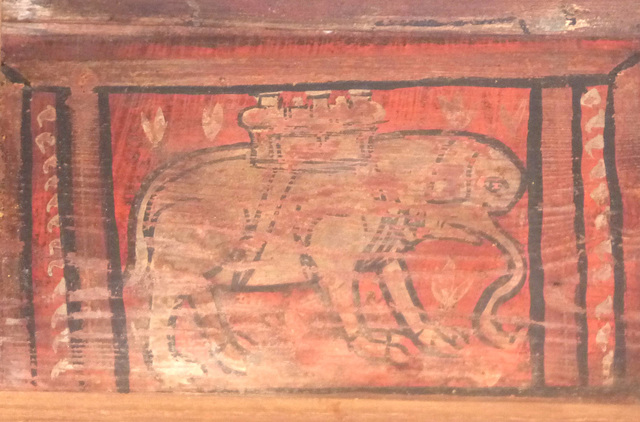Frejus - Cathédrale Saint-Léonce
Arles - Saint-Trophime
Arles - Saint-Trophime
Arles - Saint-Trophime
Arles - Saint-Trophime
Arles - Saint-Trophime
Douzens - Saint-Vincent
Mirepoix - Cathédrale Saint-Maurice
Mirepoix - Cathédrale Saint-Maurice
Montpezat-de-Quercy
Montpezat-de-Quercy - Collégiale Saint-Martin
Montpezat-de-Quercy - Collégiale Saint-Martin
Montpezat-de-Quercy - Collégiale Saint-Martin
Arcambal - Les Rives d'Olt
Figeac - St. Thomas des Carmes
Figeac - St.Thomas des Carmes
Saint-Perdoux - Saint-Pardulphe
Saint-Perdoux - Saint-Pardulphe
Saint-Perdoux - Saint-Pardulphe
Saint-Perdoux - Saint-Pardulphe
Saint-Perdoux - Saint-Pardulphe
Saint-Perdoux - Rien
Bagnac-sur-Célé
Frejus - Cathédrale Saint-Léonce
Frejus - Cathédrale Saint-Léonce
Frejus - Cathédrale Saint-Léonce
Frejus - Cathédrale Saint-Léonce
Frejus - Cathédrale Saint-Léonce
Frejus - Cathédrale Saint-Léonce
Frejus - Cathédrale Saint-Léonce
Frejus - Cathédrale Saint-Léonce
Frejus - Cathédrale Saint-Léonce
Frejus - Cathédrale Saint-Léonce
Cannes
Cannes - Marché Forville
Cannes - Notre-Dame-d'Espérance
Cannes - Notre-Dame-d'Espérance
Cannes - Notre-Dame-d'Espérance
Cannes - Notre-Dame-d'Espérance
Cannes - Notre-Dame-d'Espérance
Cannes
Cannes - Tour du Masque
Cannes - Le Suquet
Cannes - Carlton Hotel
Cannes
Location
See also...
Keywords
Authorizations, license
-
Visible by: Everyone -
All rights reserved
-
47 visits
Frejus - Cathédrale Saint-Léonce


A settlement existed here before the Romans arrived. Caesar promoted the place, which was consequently called "Forum Julii". The name eventually became the place name, which has survived to this day abraded.
Emperor Augustus increased the importance of the place when he established here the Colonia Octaviorum. An amphitheater and other structures can still be seen.
In 572 the Lombards devastated the Frejus. The siltation of the harbor was accompanied by the decline of the city. Between the 7th and the 9th centuries, Muslim invaders repeatedly raided the city.
Fréjus' resurgence began in the 10th century under the leadership of the city's bishops. He started the erection of the cathedral amd had the city fortified. In 1471, the city counted 266 inhabited houses, but a pirate raid in 1475 led to destruction of the city again.
Of course Frejus is a touristic place meanwhile, but other than neighbouring Cannes, it still has a very "french" flair, with a lot of locals drinking pastis in the sidewalk cafes.
-
The Saint-Léonce cathedral is a building originally medieval that got enlarged and altered quite often over the centuries. The two-story cloister dates from the 13th century and was used by the cathedral chapiters. The cloister encloses a rectangular courtyard. The wooden ceilings date from the 14th century and offer a collection of about 300 painted panels from the 14th and 15th centuries. A fantastic bestiary.
The wooden ceilings date from the 14th century and offer a collection of about 300 painted panels from the 14th and 15th centuries. A fantastic bestiary.
Medieval elephants are a very rare species. Here are even two of them.
They are connected to a nice locally told story. Pablo Picasso lived in the area and of course he knew the paintings of the cloister. He was visited by Dali a couple of times and together the artists went around the cloister, studying the creatures. Dali was thrilled by the elephants and so they inspired him for the elephants he created later.
Emperor Augustus increased the importance of the place when he established here the Colonia Octaviorum. An amphitheater and other structures can still be seen.
In 572 the Lombards devastated the Frejus. The siltation of the harbor was accompanied by the decline of the city. Between the 7th and the 9th centuries, Muslim invaders repeatedly raided the city.
Fréjus' resurgence began in the 10th century under the leadership of the city's bishops. He started the erection of the cathedral amd had the city fortified. In 1471, the city counted 266 inhabited houses, but a pirate raid in 1475 led to destruction of the city again.
Of course Frejus is a touristic place meanwhile, but other than neighbouring Cannes, it still has a very "french" flair, with a lot of locals drinking pastis in the sidewalk cafes.
-
The Saint-Léonce cathedral is a building originally medieval that got enlarged and altered quite often over the centuries. The two-story cloister dates from the 13th century and was used by the cathedral chapiters. The cloister encloses a rectangular courtyard. The wooden ceilings date from the 14th century and offer a collection of about 300 painted panels from the 14th and 15th centuries. A fantastic bestiary.
The wooden ceilings date from the 14th century and offer a collection of about 300 painted panels from the 14th and 15th centuries. A fantastic bestiary.
Medieval elephants are a very rare species. Here are even two of them.
They are connected to a nice locally told story. Pablo Picasso lived in the area and of course he knew the paintings of the cloister. He was visited by Dali a couple of times and together the artists went around the cloister, studying the creatures. Dali was thrilled by the elephants and so they inspired him for the elephants he created later.
Marco F. Delminho has particularly liked this photo
- Keyboard shortcuts:
Jump to top
RSS feed- Latest comments - Subscribe to the comment feeds of this photo
- ipernity © 2007-2024
- Help & Contact
|
Club news
|
About ipernity
|
History |
ipernity Club & Prices |
Guide of good conduct
Donate | Group guidelines | Privacy policy | Terms of use | Statutes | In memoria -
Facebook
Twitter

Sign-in to write a comment.